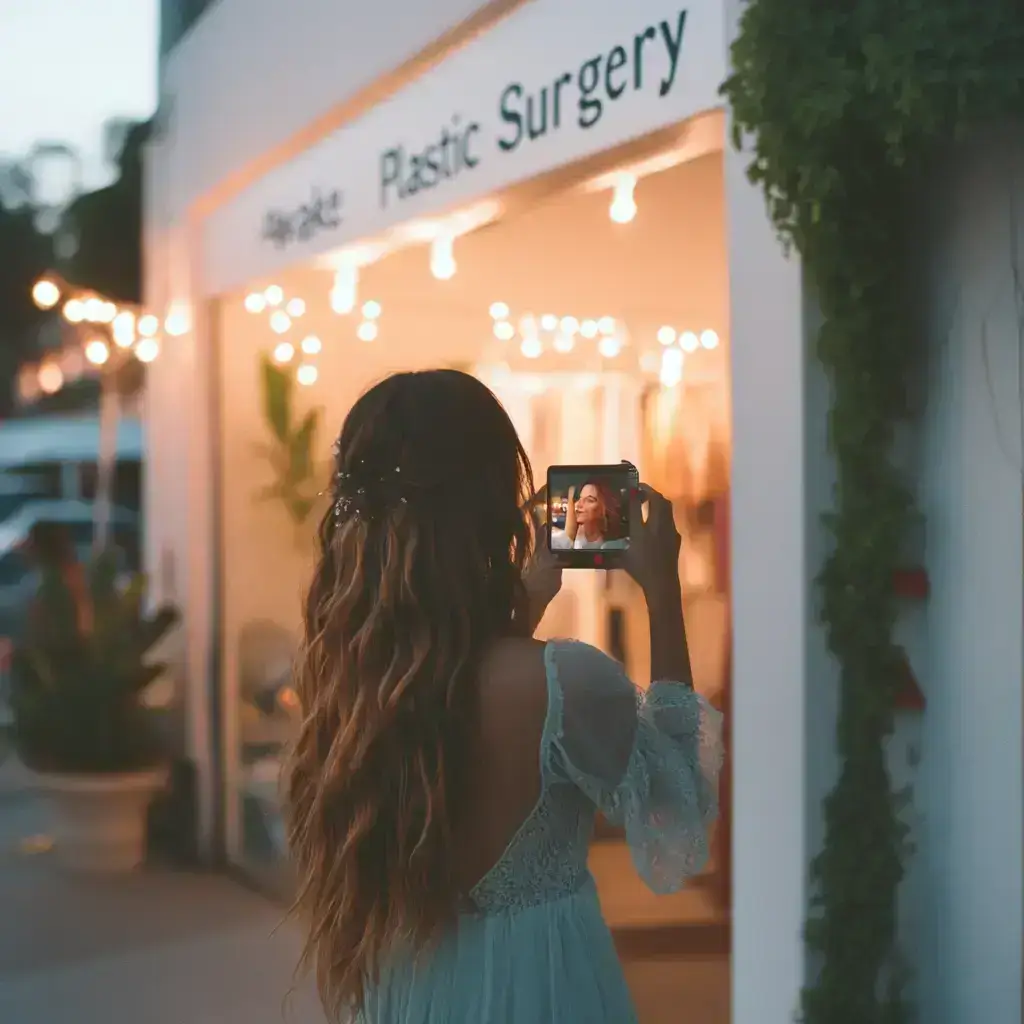In this article, we’ll explore the different types of scars, the role plastic surgery plays in scar removal, and what you can expect from scar revision procedures.
Last updated:
September 5, 2025
Introduction: Understanding Scars and Plastic Surgery
Scars are a natural part of the body’s healing process after injury, surgery, or trauma. While some scars fade over time, others can be more noticeable and cause distress. Many people wonder if plastic surgery can remove scars permanently, offering a solution for smoother, scar-free skin.
The truth is that while plastic surgery can improve the appearance of scars, it cannot make them disappear entirely. However, with modern scar revision techniques, plastic surgeons can significantly minimize the appearance of scars, making them far less visible.
In this article, we’ll explore the different types of scars, the role plastic surgery plays in scar removal, and what you can expect from scar revision procedures.
Can Plastic Surgery Remove Scars Permanently?
The short answer is no—plastic surgery cannot completely remove scars. Scarring is a result of the body’s natural healing process, and there will always be some level of scar tissue left after a wound heals. However, plastic surgery can often reduce the size, depth, and visibility of scars, making them far less noticeable.
Through scar revision procedures, plastic surgeons can reshape, reposition, or treat scars in a way that makes them blend more naturally with the surrounding skin. This can help individuals feel more confident and comfortable with their appearance.
Types of Scars: What You Need to Know
Before considering scar revision surgery, it's essential to understand the type of scar you have. Different scars respond to different treatments, and the surgical approach will depend on the scar's characteristics. Here are the most common types of scars:
1. Hypertrophic Scars
Hypertrophic scars are raised scars that form when the body produces too much collagen during the healing process. These scars are typically red or purple and remain within the boundaries of the original wound.
- Appearance: Raised, red, thick.
- Common Causes: Surgical incisions, injury, burns.
2. Keloid Scars
Keloids are more severe than hypertrophic scars and can grow beyond the original wound's boundaries. They are raised, often larger than the initial injury, and can continue to grow over time. Keloids are more common in individuals with darker skin tones and can be challenging to treat.
- Appearance: Raised, thick, can extend beyond the original wound.
- Common Causes: Surgery, piercings, acne, injuries.
3. Atrophic Scars
Atrophic scars are sunken or depressed scars that occur when the skin doesn't produce enough collagen during healing. These scars are often associated with acne or chickenpox and appear as pitted or indented areas of skin.
- Appearance: Sunken, pitted, or depressed.
- Common Causes: Acne, chickenpox, trauma.
4. Contracture Scars
Contracture scars occur when the skin tightens as it heals, often after a burn or large injury. These scars can limit movement, especially if they form near joints.
- Appearance: Tight, shiny, and may cause restricted movement.
- Common Causes: Burns, severe trauma.
Scar Revision Procedures: What Are Your Options?
While complete scar removal isn’t possible, several scar revision techniques can reduce a scar’s size, improve its texture, and blend it more naturally with the surrounding skin. Depending on the type and location of the scar, your plastic surgeon may recommend one or more of the following procedures:
1. Surgical Excision
For certain scars, such as hypertrophic or keloid scars, surgical excision may be recommended. This involves removing the scar tissue entirely and closing the wound with fine stitches to create a smaller, less noticeable scar.
- Best for: Raised scars (hypertrophic or keloid).
- Procedure: The scar is cut out, and the surrounding skin is sutured together for a cleaner, more refined appearance.
2. Laser Therapy
Laser therapy is a popular option for reducing the appearance of scars. Lasers target scar tissue by removing the outer layers of skin and stimulating collagen production, which can help flatten raised scars or soften their appearance.
- Best for: Raised scars, acne scars, and hypertrophic scars.
- Procedure: A series of laser treatments may be necessary to achieve the best results, and recovery time varies depending on the laser used.
3. Dermabrasion
Dermabrasion is a technique used to smooth the skin by removing the top layers, which can help soften the appearance of raised scars or surface irregularities.
- Best for: Acne scars, surface-level scars, and rough-textured scars.
- Procedure: A rotating instrument is used to exfoliate the scar, helping to create a more even skin texture.
4. Steroid Injections
Steroid injections are commonly used to treat raised or keloid scars. Steroids help reduce inflammation and flatten the scar over time. Multiple sessions may be needed for the best results.
- Best for: Hypertrophic scars and keloids.
- Procedure: Injections are administered directly into the scar to reduce its size and smooth its appearance.
5. Skin Grafting
For larger scars, such as contracture scars or scars from burns, skin grafting may be required. In this procedure, healthy skin is taken from one area of the body (the donor site) and transplanted to the scarred area.
- Best for: Large scars, burns, and contracture scars.
- Procedure: The surgeon removes the scarred tissue and replaces it with skin from a donor site, improving both appearance and function.
6. Fat Grafting
For atrophic scars (sunken or depressed scars), fat grafting can help restore lost volume and improve skin texture. In this procedure, fat is harvested from another area of the body and injected into the scarred area to fill in the depression.
- Best for: Atrophic scars, acne scars.
- Procedure: Fat is removed from one area of the body (e.g., abdomen) and injected into the scar to plump and smooth the area.
What to Expect from Scar Revision Surgery
If you're considering scar revision surgery, it’s essential to have realistic expectations about the results. While these procedures can significantly improve the appearance of scars, it’s important to remember that no surgery can make a scar disappear entirely.
Here’s what you can expect from the scar revision process:
1. Consultation
During your consultation with a board-certified plastic surgeon like Dr. Meegan Gruber, you’ll discuss your concerns and aesthetic goals. Your surgeon will examine the scar and recommend the most suitable revision technique based on the type, size, and location of the scar.
2. Procedure
The specific procedure will depend on the type of scar revision being performed. Most scar revision procedures are outpatient surgeries, meaning you can return home the same day.
3. Recovery
Recovery times vary depending on the procedure. Minimally invasive treatments like laser therapy or steroid injections may have little to no downtime, while more complex surgeries like skin grafting may require several weeks of recovery.
4. Results
Scar revision surgery will result in a less noticeable scar, though some scarring will remain. The goal is to blend the scar into the surrounding skin, making it as inconspicuous as possible.
Factors That Influence Scar Healing
The success of your scar revision surgery and the quality of scar healing depend on several factors:
- Skin Type: People with darker skin tones or those prone to keloids may require different treatments than those with lighter skin.
- Location of the Scar: Scars in areas with more tension (such as the chest or shoulders) may heal differently than those in less mobile areas.
- Age of the Scar: Older scars may be more difficult to treat, while newer scars may respond better to early intervention.
- Post-Procedure Care: Following your surgeon’s aftercare instructions is crucial for optimal healing and minimizing the risk of further scarring.
Achieving Better Results with Scar Revision Surgery
While plastic surgery cannot remove scars permanently, it can dramatically improve their appearance and help individuals feel more confident in their skin. The right scar revision procedure can reduce the visibility of scars, making them less noticeable and helping them blend more naturally with the surrounding skin.
If you’re considering scar revision, it’s essential to consult with an experienced board-certified plastic surgeon like Dr. Meegan Gruber, who can assess your scar and recommend the best treatment plan.


%402x%20(2).svg)





